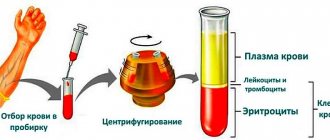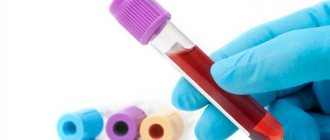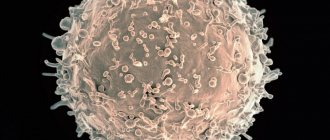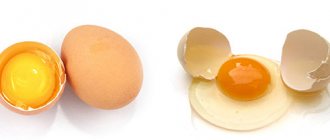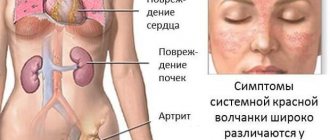Insulin is a vital hormone that is produced in the pancreas. Chemically, it is a protein that regulates blood glucose levels. The insulin level varies widely. If the hormone is not produced enough, a person begins to develop type 2 diabetes, which can lead to serious complications.
What is insulin
Insulin is one of the most important hormones that is directly involved in metabolism:
- stimulates the exchange of glucose from the bloodstream into the body's cells;
- removes excess glucose from the liver;
- converts excess glucose into glycogen or fatty acids.
The main role of insulin is that it utilizes excess amounts of glucose into other compounds and stimulates the saturation of cells with this vital substance - the main source of energy.
The hormone also performs a number of additional functions:
- activation of amino acid biosynthesis;
- ensuring normal muscle function;
- regulation of enzyme metabolism;
- restoration of damaged tissues.
Insulin index of certain foods
The insulin index is an innovation in the science of proper nutrition and a detailed table with its exact value for various foods is still in an “open” state, is incomplete and is constantly being updated with new data.
But for the most popular food products, all the necessary calculations have already been carried out and we have quite accurate information that can be used by diabetics and ordinary citizens who want to lose excess weight.
Insulin index of greens and vegetables
Potato insulin index
Insulin index of berries, fruits and fruits
Insulin index of dairy products
Insulin index of sweets and treats
Insulin index of cereals and grains
Insulin index of bread, pastries and confectionery products
Insulin index of other common foods
Knowing the insulin index of foods is not enough. For the best result, it is important to take into account the compatibility of products. A great option is to combine vegetables with proteins and fats (vegetable salad with olive oil and a piece of poultry). Starchy foods (porridge, beans, potatoes, white rice, beets) are good to eat with leafy vegetables and oils.
Avoid combining fast carbohydrates with starchy, protein foods (a sandwich or burger is one of the typical combinations). It is not the best option to mix protein foods (fish, meat, poultry) with starchy foods (that is, with traditional side dishes - white rice or mashed potatoes).
We recommend
“Buckwheat tea: beneficial properties, contraindications and reviews” Read more
Here are some more simple tips to consider when planning a diet for diabetics:
and people suffering from prediabetic conditions.
- For a very long time, the thesis has flourished in dietetics that such “healthy” foods with a low glycemic index, such as cottage cheese, are best consumed at night; this, in theory, should promote weight loss and active “nighttime” fat burning. But with the advent of new research on the insulin index, the outdated postulates of nutrition science must be adjusted.
It has now become clear that cottage cheese has a very high AI and is not suitable for consumption in the afternoon by people with diabetes and those with insulin resistance.
- Products with an insulin index above average go very poorly with fatty foods.
- When drinking alcohol with a “bad” AI, it is better to avoid high-fat snacks.
- The first half of the day is a great time to refuel with something tasty with a high insulin index. It is best to have dinner with fish, vegetables, seafood and other “goodies” with a low insulin and glycemic index, in order to eliminate the possibility of sharp evening insulin surges and protect the body from gaining excess weight.
Where is insulin produced: normal content
The hormone is produced in the pancreas in the so-called beta cells of the islets of Langerhans (the tail part of the organ). The synthesis proceeds continuously, i.e. throughout 24 hours a day. Therefore, insulin is produced in much larger quantities than any other hormone. This particular production process intensifies after a person eats.
From the pancreas, the hormone enters the bloodstream and provides a chain of processes as a result of which cells receive glucose in an easily digestible form. The body is saturated with the necessary energy, the person feels full and does not overeat.
Chemically, insulin is a protein consisting of 51 amino acids combined into 2 chains:
- A-chain (21 amino acids);
- B-chain (30 amino acids).
They are connected to each other by a special disulfide bridge - a sequence of 2 sulfur atoms S.
The level of insulin in the blood varies widely:
- 3-20 µU/ml for children;
- 5-25 µU/ml for adults.
At the same time, pregnant women and women over 60 years of age may produce more insulin - up to 36 µU/ml. Fluctuations are due to the fact that the synthesis of the hormone occurs continuously and increases sharply directly during food intake, as well as digestive processes. Along with this, the concentration depends on the age, gender, condition, and lifestyle of a person.
The concept of glycemic index and glycemic load
Before introducing the concept of insulin index, it is worth considering the more well-known and more often used concept of “glycemic index”.
The glycemic index (GI) characterizes the degree of absorption of complex carbohydrates from food and the subsequent level of blood saturation with glucose.
The GI value depends on the ability of complex carbohydrates to be broken down under the influence of digestive enzymes and on a number of “external” factors associated with cultivation, production technologies, storage conditions and culinary processing of food.
The GI value was determined experimentally - after taking a certain product, for 2 hours, every 15 minutes, a blood sugar test was carried out. Naturally, for such a comparison of the behavior of dietary carbohydrates and compiling a table, we took ordinary glucose as the starting point - absorption of 100 g = 100% or 1 g of glucose equals 1 conventional GI unit.
After a snack, the amount of sugar in your blood rises within 30 minutes. If you eat fast carbohydrates, then this time is reduced. The pancreas strives to reduce glucose levels, produces insulin and directs it to the body's needs: either for energy or for reserves. It depends on what kind of carbohydrates and how much you ate - fast or slow. The fast ones cause a sharp jump and create a surplus, while the slow ones feed the body gradually. Therefore, when reducing the total caloric content of the diet, foods with a low GI are preferable - they maintain a feeling of fullness longer at the same calorie content.
Pros of low GI foods
:
- Gradually nourishes the body and prolongs the feeling of fullness.
- Does not cause a sharp increase in blood glucose.
- They don’t have time to get into the adipose tissue, because slowly spent on the needs of the body.
Disadvantages of Low GI Foods
:
- They take a long time to replenish glycogen stores, so they are not suitable for quickly obtaining energy.
- Low energy density. For example, it is impossible to get a large amount of carbohydrates from buckwheat, because such volumes are simply impossible to eat. Therefore, to quickly replenish energy, you need fast carbohydrates.
- Taste. In general, low GI foods are not as tasty as high GI foods.
Simultaneously with GI, the concept of Glycemic Load (GL) was introduced, because the metabolism of carbohydrate metabolism is affected not only by the structure of carbohydrates, but also by their direct quantity.
GN allows you to characterize the load on the pancreas experienced when producing the required amount of insulin in response to a specific food product. For example, the load from 50 g of potato carbohydrates is 3 times higher than from the same 50 g of vermicelli carbohydrates. Some considered this to be a low workload.
Insulin synthesis disorders and type 2 diabetes
Sometimes the pancreas stops producing insulin in the required quantities. If this is observed regularly, the patient develops type 2 diabetes. This is a metabolic disorder that manifests itself with a number of symptoms:
- excessive feeling of thirst;
- frequent acts of urination;
- excessive feeling of hunger;
- vision problems (blurred);
- feeling of lack of strength;
- increased fatigue;
- numbness, tingling in the upper and lower extremities;
- long-lasting wounds.
Type 2 diabetes mellitus is a dangerous disease that leads to a number of complications, including death:
- strokes of various types;
- nephropathy;
- polyneuropathy;
- dementia;
- diabetic foot and others.
"Passing Through"
Humanity approached the invention of insulin from afar.
People paid attention to a strange and insidious disease, accompanied by increased urination and, as a result, constant dehydration and increased thirst, even before our era. The most varied and unusual explanations for this phenomenon have been given. In particular, in 201, the Greek doctor Aratheus of Cappadocia stated that there was “melting of muscle tissue and bone and excretion in the urine.” He also owns the name of the disease - “dia-byno”, that is, “passing through”. This meant, of course, liquid rapidly passing through the body.
Over time, a connection was established between this disease and high sugar levels in the body. But no one knew what kind of connection this was and what to do with it. We followed a simple path: a strict and absolutely no-carbohydrate diet.
The word “diabetes” sounded scary. The life of the sick person was usually limited to a maximum of seven to eight years. After which he died - from complications of diabetes. And from exhaustion, which was partly caused by this seemingly life-saving diet.
However, these years were, to put it mildly, not the best. Moscow merchant Nikolai Varentsov wrote about the Kiev merchant Lazar Brodsky: “Brodsky was a diabetic... he, who had amassed enormous wealth, wanted to enjoy life, and the percentage of sugar in his body put him on a strict regime. He had to restrain himself in everything: go annually to the boring Liman sanatorium, live there for a month or more, follow all the doctor’s orders, and finally the sugar seemed to disappear. But as soon as he came home to Kyiv, where, as he said, he had an excellent French cook... the sugar percentage appeared again, increasing monthly. And Brodsky, who had achieved all his possibilities, was forced to deprive himself of everything.”
Ironically, Lazar Izrailevich was one of the largest sugar producers in the Russian Empire, from which he made his capital.
At the same time, the newspapers were full of messages that were not at all uplifting.
Jan Steen, The Doctor's Visit. Image from diapedia.org
“The other day, the artist N. Butze died, who was persuaded by one of the representatives ... of the sect to stop the very successful treatment of the rudiments of sugar disease and limit herself to her prayers.”
“Recently, diabetes (diabetes) has become widespread in Moscow, mainly among the intelligentsia. Even many doctors are getting sick. The disease is very difficult to treat conventionally and sometimes ends with a sad outcome before the age of 30.”
This surge in diseases was associated with the revolutionary events of 1905 and the corresponding stress.
In 1906, Chaliapin was diagnosed with the disease. Subsequently, it was diabetes that became one of the reasons for Fyodor Ivanovich’s non-return to the USSR - he allegedly needed treatment abroad.
The hero of Gorky’s novel “The Life of Klim Samgin” shares his medical knowledge: “Cognac is useful for diabetes, and blackcurrant for intestinal disorders.”
In 1915, the poet Alexander Tinyakov dedicated a terrible poem to his friend, critic Heinrich Tastaven, who died of diabetes at the age of 35:
Death is playing a fatal game with me, Crushing my throat with a merciless hand, And I know that in a month I will die: I will become wormy and stinking dirt.
Will there be heaven or hell? Will I be resurrected or not? All the same: equally stupid! I have diabetes, I have diabetes, - Hell and heaven are indifferent to a corpse!
Arkady Averchenko, on the contrary, allowed himself to mock the disease:
“Chugunov. I have diabetes.
Gendelman (changes a seat closer to Chugunov and, pushing his bowler hat to the back of his head, speaks enthusiastically). Look at him. He has diabetes, but he is silent! Do you have a lot of diabetes?
Chugunov. What do you mean - a lot? How much should it be!
And in the same 1915, the disease was suddenly completely defeated: “The Journal of Medical Sciences reports the discovery of a method of radical cure for sugar disease... The main medicine used in treatment is bicarbonate of soda with a small admixture of salt.”
Here, as they say, no comments.
How to determine insulin levels
Insulin levels can be determined in a laboratory setting using a venous blood test. It is carried out for different purposes:
- detection of type 2 diabetes;
- identifying the need for artificial insulin intake;
- determining the causes of hypoglycemia (low blood glucose).
The analysis is carried out only as prescribed by a doctor. The main prerequisites are:
- sweating;
- blurred vision;
- cardiopalmus;
- frequent feeling of hunger;
- heart attacks;
- dizziness;
- to determine whether the insulinoma (pancreatic tumor) was successfully excised;
- for diagnosing relapses of insulinoma;
- to control the transplantation of Langerhans islet cells after the intervention.
Before conducting the study, certain preparation is required:
- do not eat food for at least 12 hours;
- do not take medications 24 hours in advance (check with your doctor);
- do not smoke at least 3 hours before the test.
Frederick Banting's idea
In 1920, Frederick Banting, a 22-year-old surgeon, tried to open his practice in a small Canadian town, while teaching at the University of Western Ontario. On Monday, October 31, Banting was to teach students about carbohydrate metabolism, a topic in which he himself was not strong, and in order to better prepare himself, late Sunday evening Banting read M. Barron's just published article, which described blockade of the pancreatic duct with gallstones and the resulting atrophy of acinar cells (cells responsible for exocrine function)2. That same night, Banting wrote down an idea he had: “Ligate the pancreatic ducts in dogs. Wait for the atrophy of the acini, extract the secretion from the islet cells to alleviate glycosuria.”5 Having failed to achieve practice, Banting went to the University of Toronto, his alma mater, where he turned to Professor John MacLeod, one of the leading experts on carbohydrate metabolism. Despite the fact that the professor did not accept Banting's idea with enthusiasm, he allocated the surgeon a laboratory with a minimum of equipment and 10 dogs. The student Charles Best became Banting's assistant by lot. In the summer of 1921, the experiment began.
Banting and Best began their research by removing the pancreas from dogs. In some animals, the researchers removed the pancreas; in others, they ligated the pancreatic duct and removed the gland after some time. The atrophied pancreas was then placed in a hypertonic solution and frozen. The resulting substance, after defrosting, was administered to dogs with a removed pancreas and diabetes mellitus clinic. Researchers recorded a decrease in glucose levels and an improvement in the animal’s well-being. Professor MacLeod was impressed with the results and decided to continue his work to prove that Banting and Best's "pancreatic extract" actually worked.
New results from experiments using the pancreas of cattle have made it possible to understand that it is possible to do without the complex procedure of ligating the pancreatic duct.
At the end of 1921, Bertin Collip, a biochemist, joined the research team. With its help, using fractional precipitation with various concentrations of alcohol and other purification methods, extracts of pancreatic islets were obtained that could be safely administered into the human body. It is an effective and non-toxic substance and was used in the first clinical trials6.
What do the analysis results mean?
During the study, blood is drawn from a vein, after which the concentration of the hormone is determined using a chemical analysis. A value in the range from 2.6 to 24.9 µU/ml of blood is taken as normal.
If the norm is exceeded, the patient is sent for additional diagnostics to determine possible causes. The most common ones are:
- acromegaly;
- insulinoma;
- pancreas cancer;
- chronic pancreatitis;
- Itsenko-Cushing syndrome;
- obesity of varying degrees;
- intolerance to simple carbohydrates (glucose, galactose, fructose).
What to do if insulin is low
If the pancreas produces little insulin or does not synthesize it at all, urgent administration of the hormone artificially is required. To do this, they give injections or take tablets. The latter option is more convenient, since you do not need to give an injection, and it is also easier to take the package of tablets with you.
The dosage, frequency, and time of administration are determined by the doctor. Depending on the characteristics of administration, there are several types of insulin:
- fast acting - it starts working within 15-20 minutes after administration;
- short-acting – after 40-60 minutes;
- intermediate action – after 1-2 hours;
- long-acting - after 2-4 hours.
